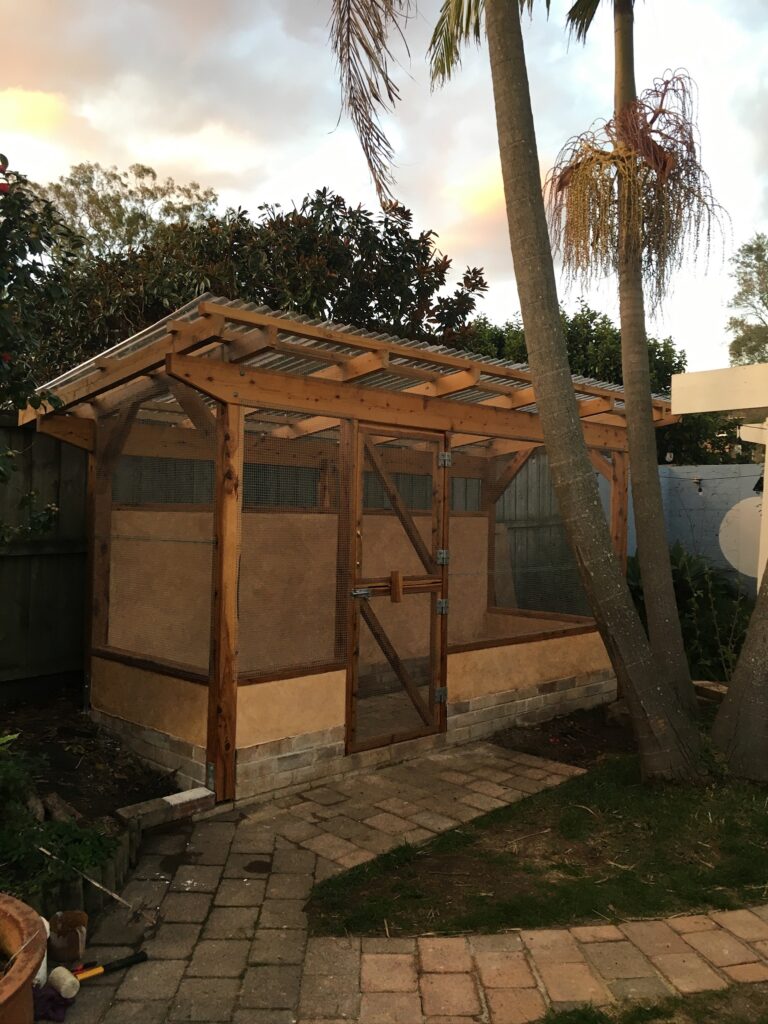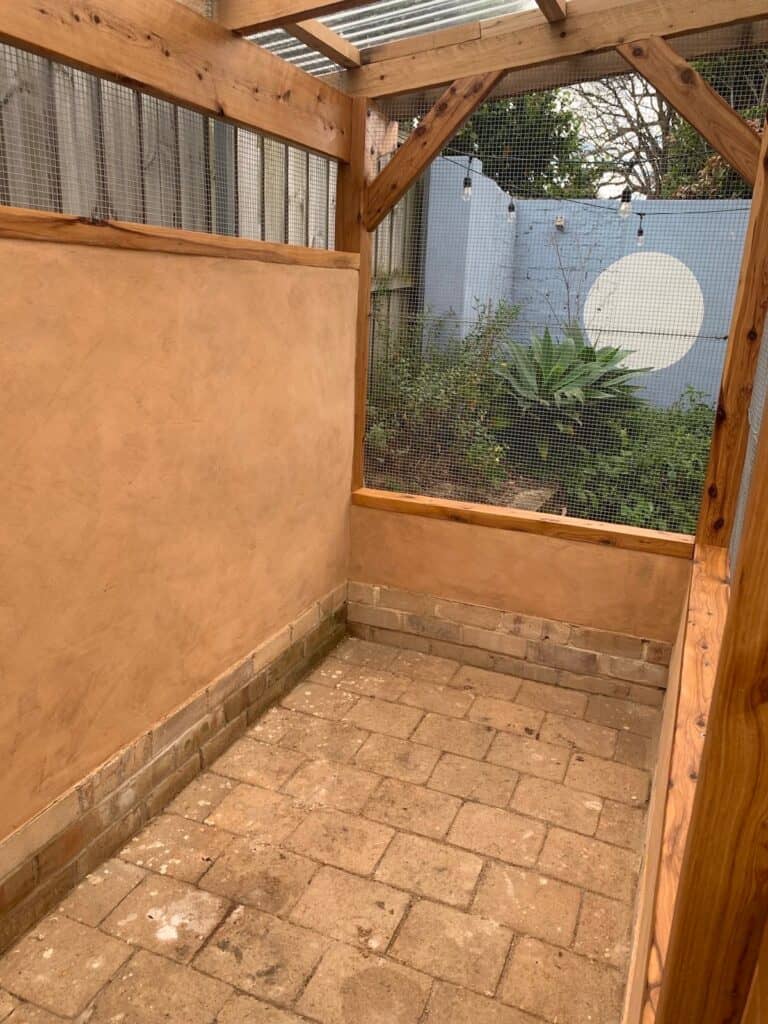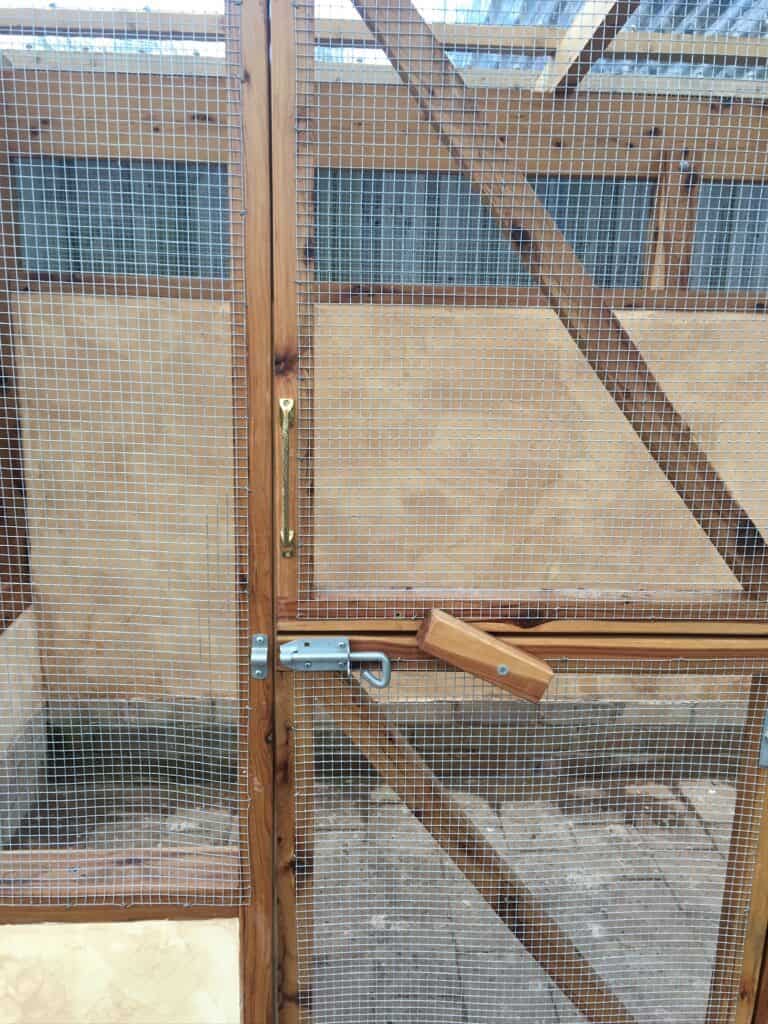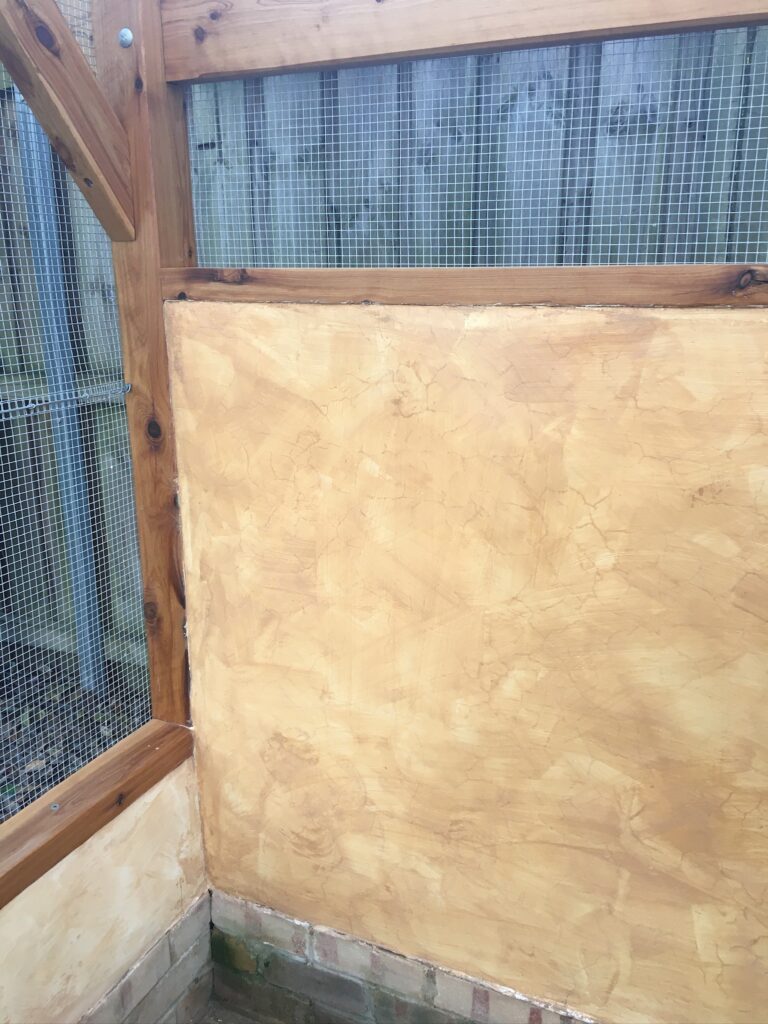Animals play a crucial role in sustainable and permaculture systems and are a great thing to add to a suburban permaculture backyard. They help to create closed loops by converting Kitchen scraps, weeds, bugs and insects and garden bed trimmings into eggs, meat, and manure. The eggs and meat can be eaten, and the manure is an amazing additive in composts which then help plants to grow and thus the cycle continues.

These clients wanted to keep chickens but were concerned about elevated lead levels in their soil which is a common problem in Suburbia. If you would like to test your property for heavy metal levels you can send soil samples to vegesafe (NSW) or garden safe (Victoria) https://www.360dustanalysis.com/get-started/soil or to a private testing lab.
To stop the chickens foraging through the gardens and lawns and thus accumulating heavy metals into their manure and eggs they would have to be kept inside a chicken coop and not allowed to free range or their time free ranging would be limited. The clients decided this was not an ethical way to keep chickens but much better suited the size and shy nature of Quails. They had a large enclosure in mind, enough to give 5-8 Quails ample room to forage through a deep litter of tree mulch.
When it came to discussing materials for this Quail aviary, I touted on the many benefits of earthen walls such as:
We came to a design that included a Cypress pine timber frame with wattle and Daub infill wall panels built up on a sub floor/footing of recycled brick. The bricks came from a demolition on the same street, the clay was excavated both on site while digging the foundations and from a nearby job and the cypress pine is milled in Queensland (unfortunately I have not been able to find a local supplier yet).



Wattle and Daub is a method of timber and clay rich earth construction that exists in many parts of the world under different names and varying techniques. Typically, some sort of post and beam structure is erected to which vertical and horizontal ‘wattles ‘are attached and woven in-between the timber posts and beams as a lattice structure. A mixture of clay rich sub soil, water, straw, or straw like fibre and/or sand is than applied or ‘daubed’ onto the ‘wattle’ lattice. The walls are then finished with clay or lime plasters depending on weather protection needed, local resources and local vernacular techniques. In this case we held a workshop where we prepared the ‘wattles’ and mixed and applied an initial clay, water, sand, and straw substrate. You can watch a short video of the workshop here https://www.youtube.com/watch?v=ALNQvb5_Sjs
The walls were then plastered with a clay sand and straw basecoat to level out the walls and 2 coats of lime and sand plaster before being finished off with a lime, casein, and clay paint. This allowed the walls to have the added protection of a lime plaster while using the paint to bring back the charm of the earthy clay-coloured walls.
We are very happy with the result and the Quails seem very content in their home.
I wrote an article about the wattle and daub workshop here.
Natural Building in the suburbs of Sydney